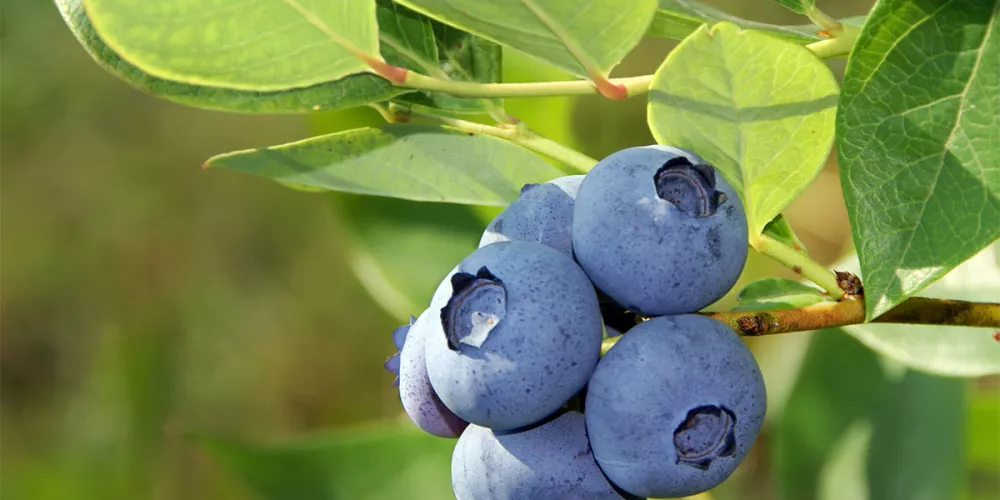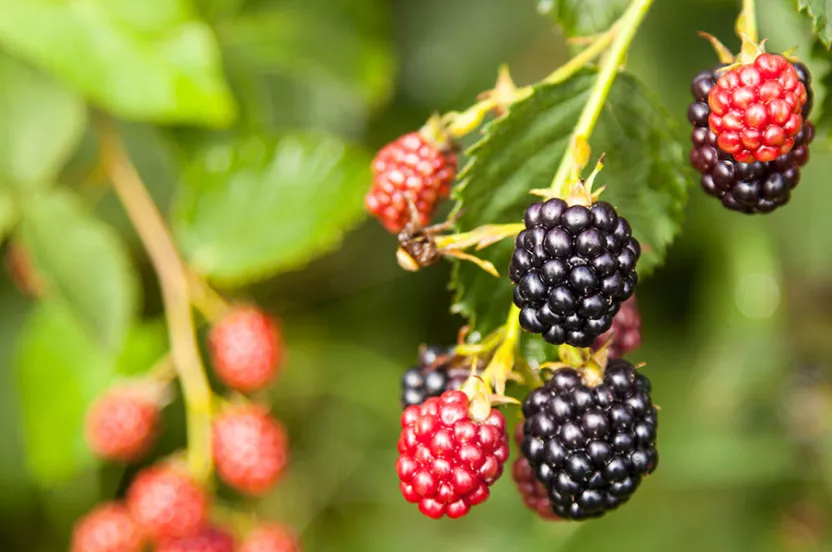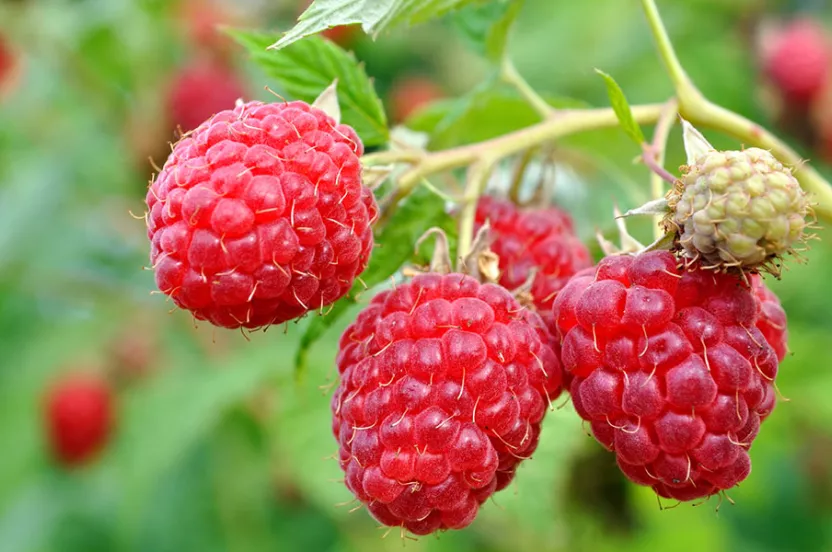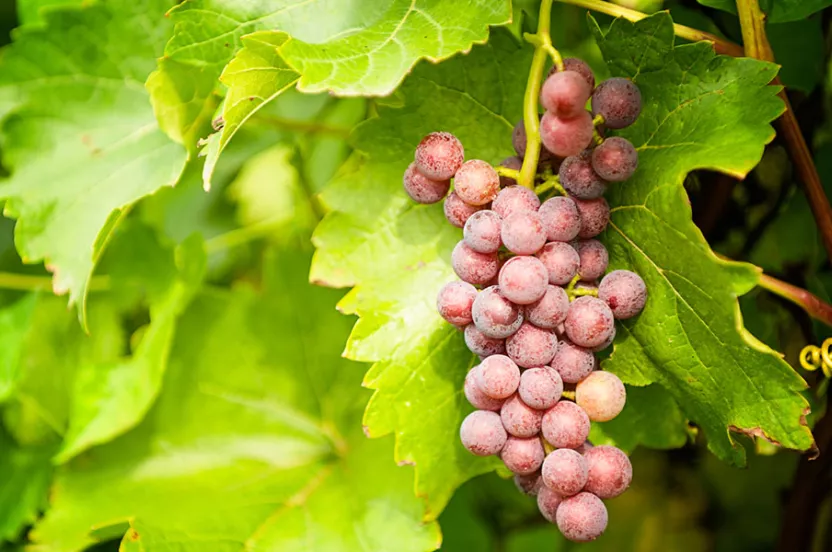Give before midnight on July 31 to double your impact where trees need us most. CHOOSE A PROJECT

Northern highbush blueberries are natives of North America.
They are an upright bush with a relatively shallow, fibrous root system and woody canes. Fruit is borne on buds formed during the previous growing season in late summer. Highbush blueberry plants leaf, flower, and fruit in June. They are used as hedges, shrub borders, beautiful ornamentals or for wildlife.
How to Plant, Care, Prune and Harvest
Site Selection
Site Selection for Blueberry Bushes
- Light: Full Sun to Partial Shade
- Soil: Moist, acidic, organic, well drained soil. Highbush blueberries require a soil pH of 4.0-5.2. If you do not have acidic soil, it can easily be changed by working with a local lawn and garden supply store to help lower your soil’s pH. The pH of the soil can also be lowered by adding finely ground straight elemental sulfur or elemental sulfur in pill form. Aluminum sulfate and iron sulfate are no longer recommended, because they cause plant toxicity with certain soil types. A range of 3-20 percent organic content is best. To increase the soil’s organic content, amend with organic mulch, wet peat moss, well-aged sawdust, straw or leaf litter.
- Pollination: Blueberries are self-pollinating. However, cross-pollination produces a better crop, creating larger berries and larger yields. It is best to plant 2-3 types of blueberry with the same bloom time. (Note: Rubel and Bluecrop both bloom mid-season).
How to Plant Northern Highbush Blueberries
For best results, plant your blueberry bushes in early spring. Once your plants arrive, plant them immediately. If you cannot plant immediately, keep new arrivals cool and roots moist. To keep cool, it is recommended that you store in refrigerator or cool place.
- Unpack and Soak: Unpack your blueberry bush and soak in water for 3 to 6 hours just before planting.
- Cut Broken Roots.
- Dig Hole(s): The width of the hole should allow you to spread roots. If you are planting multiple blueberries, dig holes 4'-6' apart. If you are creating several rows dig holes 7'-12' apart.
- Spread Roots in Hole
- Shovel Dirt Back in Hole and Add Amend Soil.
- Do Not Tap Soil: Don’t step on the soil or tap it down.
- Water: Give each plant 1"-2" of water.
How to Water Blueberries
Blueberry plants have a thread-like root mass with no root hairs. Because they have no root hairs, they are sensitive to fluctuating soil moisture. Deep, low pH mulch like peat moss, pine needles or well aged sawdust conserves water and minimizes soil water fluctuations.
Water blueberry plants during the day. Keep the soil moist but not soggy. Give them at least 1" per week during growing season and up to 4" per week during fruit ripening. Keep the soil moist to a depth of 1". Water evenly on all sides of the plant. Insufficient water when the buds start to grow in late summer and when fruit is developing the following summer can lead to smaller berries. Too much water can lead to large, bland fruit.
How to Control Weeds Around Blueberries
Weed control is essential. Eliminate weed competition prior to planting if possible. Blueberry plants are shallow rooted, so do not hoe or cultivate around the bushes deeper than 2". Pull the weeds out.
How and When to Fertilize Blueberry Bushes
Blueberries do not fertilize the first year. During the following years, fertilize with ammonium sulfate or a complete 10-10-10 fertilizer (for acid loving plants) in spring. Split the dose, one as buds open and the second a month later. Increase the amount as the plants mature. Only nitrogen is required on an ongoing basis. Never apply nitrate containing fertilizers such as ammonium nitrate or calcium nitrate as these can be toxic to the plant.
How to Prune Blueberries
Do not prune for the first 2-3 years except to remove damaged or rubbing canes. Remove the fat fruit buds the first year to force vegetative growth and help the root system get established. Upright blueberry shrubs tend to become dense in the center causing shading.
After the third year, a mature cultivated blueberry plant has 15-18 canes which originate from the crown. Pruning controls the crop to increase fruit quality.
When the bushes are mature after several years, remove older central canes and prune inward pointing laterals back to the main cane. Prune when dormant in late winter or early spring. Fall pruning is not recommended, because the new shoots could be killed by a cold winter. If necessary, thin out the dormant fruit buds to get fewer but larger berries.
How to Protect Your Blueberries from Birds
Netting is the most effective solution to prevent birds from consuming your crop. Put it on as the fruit starts to ripen. Tie securely around the base of the plants to exclude rodents.
Blueberry Picking
These northern highbush cultivars ripen mid-season, but will not produce a crop until at least the second season.
When to pick your blueberries: Blueberries taste sweeter if left hanging on the bush to fully ripen. Pick 3-7 days after the berries turn completely blue all the way around for maximum sweetness. The stem should be blue not green or red, berry skin dull looking, and the berry detaches easily.
Refrigerating your blueberries: Refrigerate in a shallow container or freeze right after harvest. Do not wash the berries until ready to use. Refrigerated blueberries are best when used within 3-5 days, but storage life can extend 7-10 days. Blueberries will stain clothing.


